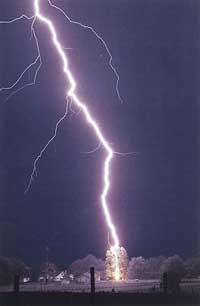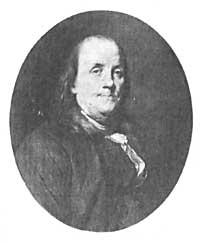What to do in case of a storm?
1993/11/01 Etxebarria, Jose Ramon Iturria: Elhuyar aldizkaria
In the previous number (i.e., "Elhuyar. Science and Technology" 76, October 1993), "Atmospheric electricity. In the article entitled "Lightning and others" we saw electrostatic phenomena in the atmosphere, and this time we talked about lightning and protections.
Structure of thunder clouds. Origin and evolution
In order to understand the behavior of thunder attacks and the distribution of electric charges, we start from the explanation of its general structure, in which the mechanical-thermodynamic structure is fundamental.
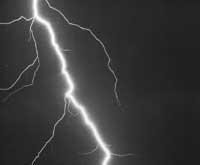
The clouds of thunder attacks are arranged by rooms, each of them can be considered almost independently, and what happens in each of them is similar. Let us therefore imagine such a room and analyze its temporal evolution. In this respect, Figure 6 shows schematically three stages of this evolution, representing the initial phase of growth, the mature room and the final phase. Let us begin with a brief description of these three phases.
In the first phase the cloud swells and grows, with upward currents in the air, which in turn absorb the surrounding air. In addition, as it rises, the air rises faster. Upon reaching the maturity phase, the cloud is much higher and higher than at first, and within it currents are organized in different directions. On one side a strong downstream is generated that favors the fall of thick drops of water or hail, causing an intense rain in the form of a storm. At this time the rays are mainly produced. In the same way, soon before there are waves of fresh air around the surface.
Over time, as the life of the cloud ends, the aggression is losing strength, and in the third phase the air currents within the room are heated, with a downward trend, and the rain is dimming. Above the cloud disperses in the form of anvil. The end of the thunder attack comes.
In this evolution there are aspects of physical interest, in particular the mechanical-thermodynamic explanation of the generation of currents and the distribution of the electric charge. From the first one we will not talk much here, since from it you can find enough information in the reference works. Secondly, it is said that the structure of electric charges in the case of the adult room of thunder attacks is similar to that represented in Figure 7.
The upper part is positively charged, while the lower part is mostly negative. However, in the lower part there is a small region where there is a positive charge and it is also located in the region of intense rainfall. It is not very clear what the operation of this region is.
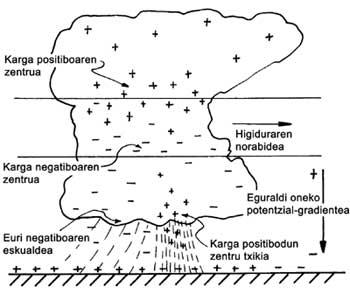
Load distribution mechanism
You may wonder how the electrical structure of the clouds appeared in the previous section can occur. On the one hand, we can say that this structure is sufficiently tested by measurements, but on the other hand, to explain the mechanism that generates this distribution, not only theory, but also inadequacy.
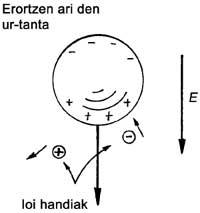
The load at the bottom of thunder attacks is very high, which can lead to a potential difference between the cloud and the Earth's crust of 20, 30 or 100 million volts, much higher than 0.4 million volts from the 50 km layer to the Earth's surface. This huge difference of potential is the one that will cause the rays, transporting to the earth surface 20~30 coulomb in each discharge of this type. It may be asked how long the cloud room system takes to recover.
Measurements indicate that the mean is 5 seconds or less. That is, after this time the system is ready for a new download, although the process is sufficiently random, since the geometry and conditions of the cloud are constantly changing. However, this is what makes a 4 amp current in the thunder cloud mechanism, so positive and negative internal loads should be distributed at this rate, which will require a proper theory.
According to data from the experience, it is clear that in the case of thunder attacks there is a strong relationship between torrential rains and electrical activity, and that electrical phenomena appear coinciding with the start of heavy precipitation. There are also a number of requirements that any theory of load distribution must meet:
- The load up positive and down negative.
- The distribution of loads must be able to explain the value of certain amps.
- The process must also occur below the freezing point of water and must be compatible with solid-state precipitation.
To explain these and others, different theories have been invented, but none give a complete and adequate explanation. However, we will make a statement of this type of theory, with the intention of explaining how things can happen, but aware that it is not total. This theory is Wilson's theory
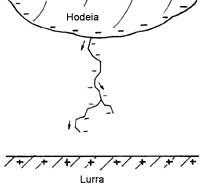
Wilson's theory analyzes the behavior of the drop of water falling within an electric field (whatever the freezing). For the cause of the field, the drop will have an induced dipolar moment, being the positive bottom and the negative top, as shown in Figure 8. The large ions mentioned above are then considered to exist in the air. During the fall of the drop, when approaching the ions, the positive ions will repel from the bottom and will hardly be able to approach the top of the drop, since the drops fall quickly and the large ions work slowly. On the other hand, as it approaches, the drop will attract negative ions and these can get caught, negatively loading the drop. In this way the negative load would move to the bottom of the clouds, explaining somehow the structure of the cloud.
However, there are problems that have not been clarified with this theory. First, the distribution of loads in thunder clouds is very high and the supply of simple atmospheric ions is insufficient. For this reason Wilson and others have proposed an additional source of ions that can be summarized as follows. Once the load distribution is started, very violent electrical zones are observed that allow the air to be easily ionised. If there are heavy spots (e.g. small droplet), a “brush discharge” may occur.
Due to the strong electric field, electrons accelerate, colliding with atoms, extracting more electrons and leaving positive loads behind. This can lead to a kind of chain reaction locally, producing large ion uptake. Something like this may occur inside the clouds so that the problem of ion supply is exposed. But the truth is that it is not very clear if things really happen that way.
In any case, the above explanation allows us to understand, at least in part, the generation of electricity in the atmosphere. So things happen more or less within a cloud of thunder. Positive and negative charges are distributed due to air currents, ions and water droplets or ice particles.
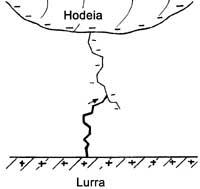
The positive loads are driven to the top of the cloud and the negative ones to the bottom, passing the latter through the rays to the terrestrial surface, passing the positive loads to the upper layers in the dismantling of the cloud. On the other hand, this separation between the atmospheric layers generated in thunder attacks is slowly unloading in regions with good weather, thanks to the conductivity of ions emitted into the air by cosmic rays and other means. This general process, in dynamic equilibrium, is occurring continuously throughout planet Earth.
Explanation of the lightning process
To explain the process of the rays, we will cite the case of the most common ray, which occurs between the negative lower part of the cloud and the positive region of the Earth's surface, to qualitatively understand the processes that occur in the different types of rays.
As has already been indicated, in this case the accumulation of negative load in the lower part of thunder clouds, passes to the earth surface by means of lightning. How? In the following lines we will try to describe the most common case.
The bottom of the cloud is much more negative than the Earth's surface in front of it, so electrons accelerate to the ground. However, the beam is channeled by a very defined path, according to the subsequent process. First of all there is something called a “leading step”. Each of them is straight, has an approximate length of 50 m and is negatively charged from the cloud. Each step is done very quickly (for example, the sixth part of the speed of light) and then stops, with about 50 microseconds, to take another step, changing direction, making everyone a path similar to figure 9.

Once the leading step has reached the ground, there is a path like a “guiding thread” to pass the load from the cloud to the ground. In this way, the visible ray is produced, that is, the beam moves upwards, as shown in figure 10, since the discharge starts at contact with the ground. This is why it is called return lighting. On average, the lightning discharge current can reach a peak of 10,000 A, of course in a very short time, transporting up to 20 coulomb.
The energy used in the process is mainly transformed into a noise, a radio and a heat, called thunder, which is heard shortly after the sound light. Although the peak of temperature attainable in the channel created by the leading step is very high (about 30,000°C), the duration of the summit is a few millions of a second, which makes the clothing of people affected by lightning hardly burn. However, in some cases it is able to create sparks to start burning forests. On the other hand, this overheating of the air generates the shock waves generated by thunder.
However, it is not necessary to finish the previous process with the only existing download. When the overcrowded return disappears, another leader goes down, this time without scales, and the discharge returns. The process can be repeated several times until the next ray.
The above description did not take into account singular elements, such as the consideration of the flat surface. We have not said anything about the geometrical shapes that can be created locally and about the local influence that sharp objects can have (tall constructions, alone trees, mountain peaks...) when directing the beam to one or another point. But we will talk about that in the following sections.
Lightning rod structure
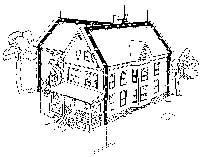
Franklin was the first to suggest the idea of preparing lightning rods, in order to test the process of electrification of thunder clouds and then channel the bertatic current safely. The way to protect the house through the lightning conductor is shown schematically in Figure 11. In it it can be observed that the lightning rod is connected to the ground by a wire or metal sheet (usually copper). The idea is very simple, that is, to put the right way for the lightning to arrive, so that the current can start without discomfort in others.
In short, the lightning arrester serves to channel the rays that would fall around it and serves to carry the current directly and safely to the ground. It seems that it would wrap those that would fall in the radius of its height and, according to the authors, with the vertex at the tip would protect the lower cone of 45º.
On the other hand, currently, the electrical installation of homes is a problem that is taken into account and that most appliances are made with grounding, for which the third thread connected to the ground is placed.
Security measures against thunder attacks
As noted in the previous sections, care should be taken in case of thunder attacks, if possible to remove the influence of lightning on people. The following are recommendations contained in the Meteorology Dictionary published by UZEI, classified into two groups. The suitability of these measures can be discussed based on the above.
A) If you are in Etxebarne
- Stay inside the house without leaving. Do not approach open doors and windows. Avoid contact with unnecessary electrical appliances and metal objects such as oven, pipe or sinks.
- Do not use electrical appliances during thunder attack.
- In case of a thunder attack, the telephone will not be used, except to request assistance. Lightning can enter by telephone thread.
- You don't have to go out to pick up the clothes that are drying up.
B) If you are outdoors
- Stop working and get away from metal tools. Tractors and other cultivation tools are in contact with the soil and the rays are frequent.
- Put in the car, if possible, or if it is inside, do not leave. Cars offer good lightning protection.
- Look for protection at home. If there are no houses in the surroundings, go into a cave or trench or be kept under an arboreal mass.
- He who is with the backpack, let it on the ground and kneel on it. The backpack acts as an insulator.
- If the hair rises, the skin is tinged or at night a blue light is seen in the metallic objects (the clear Santelmo), the lightning is about to fall. Lie down as soon as possible on the floor.
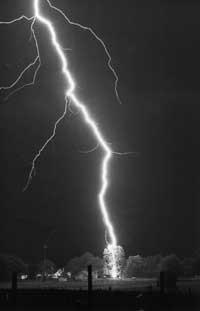
Note: People who have suffered lightning can resuscitate many times by mouth breathing, cardiac massage, and prolonged artificial breathing.
As for the final note, the case of Toy Trice that appears in the image on the left can be cited as an example. Despite the lightning strikes in football, even though the shell is pierced and the garments are burned, and even though he is dead without breathing, it can be said that with artificial breathing and other aids he “rose”. For those who know about this problem, with prompt and adequate relief on time, most of those affected can survive. Repeating the ironic words of Professor Martín Uman: "Actually, lightning is not capable of killing people." However, unfortunately, this same summer a thirteen-year-old child died victim of the lightning of Etxarri Aranatz. First aid arrived too late.
On the other hand, it is believed that many trees affected by lightning survive without suffering great damage. This happened in the case of the image tree. This ray fell in 1984 and the tree is still alive. Most of the time the current passes through the surface of its trunks without deteriorating the internal structure. However, there are trees that have been burned.
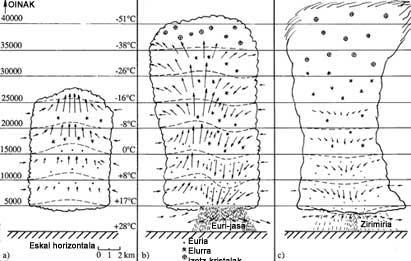

Gai honi buruzko eduki gehiago
Elhuyarrek garatutako teknologia




